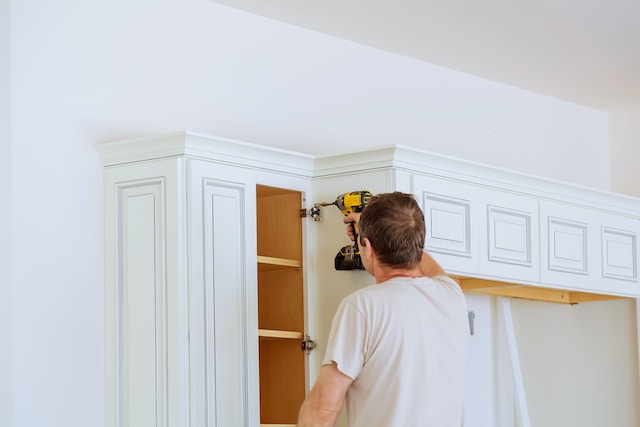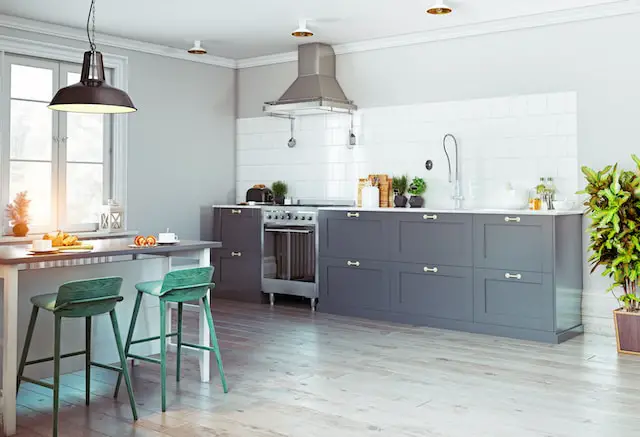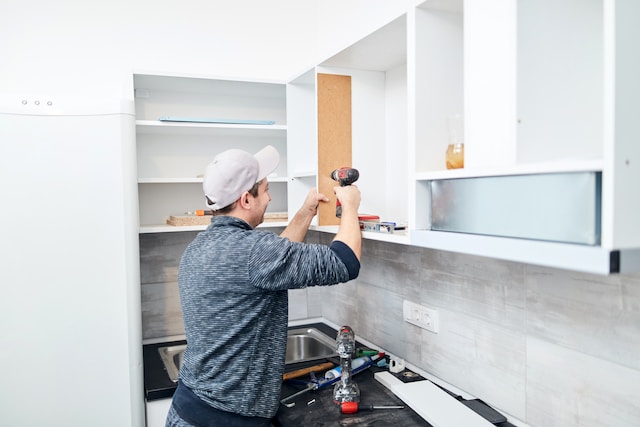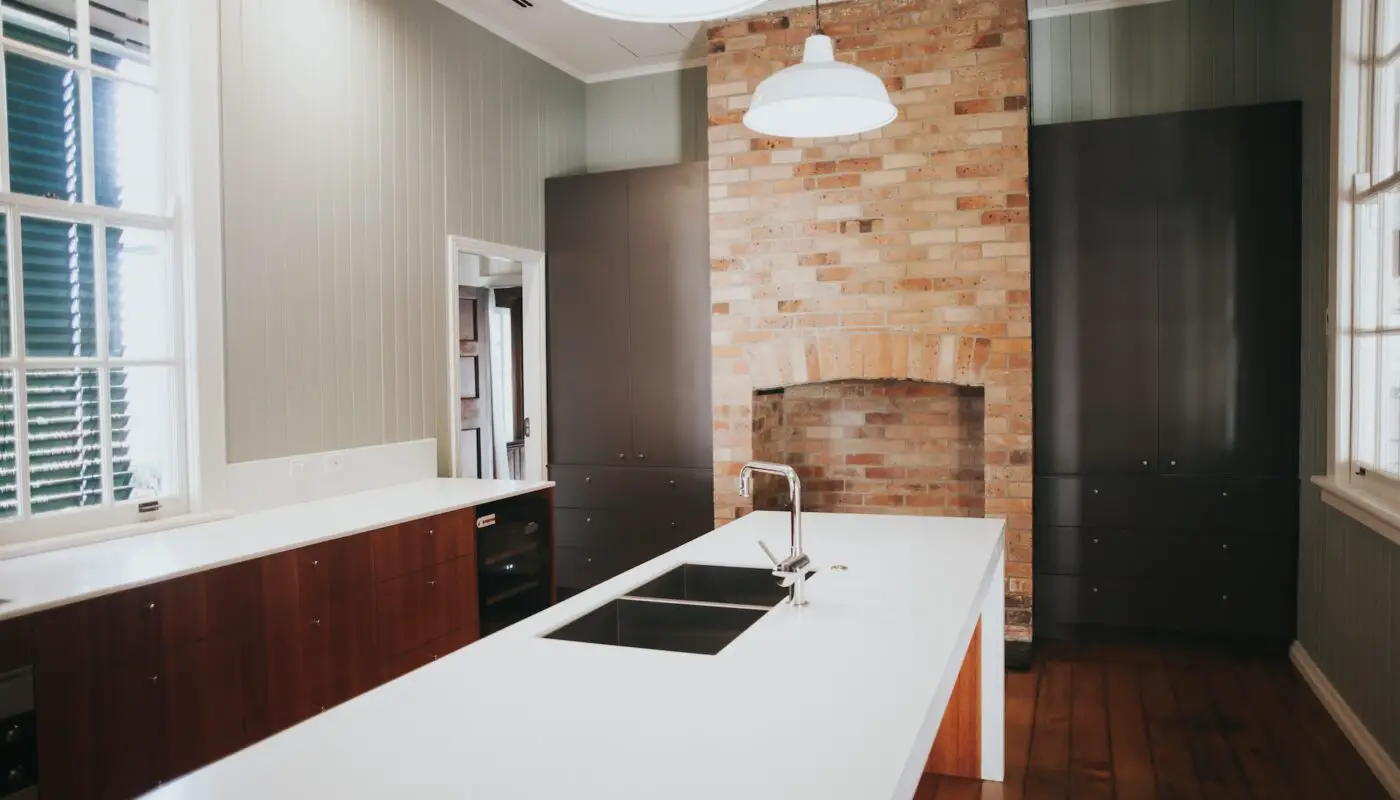Frameless Cabinets are the unsung heroes of modern kitchen design. They offer more than just a pretty face; they bring functionality and increased storage. This article dives into the benefits, material choices, and design considerations you should know.
Let’s Cover This
Introduction to Frameless Cabinets
In today’s modern kitchen designs, frameless cabinets have become an increasingly popular choice among homeowners. These sleek and stylish cabinets offer a seamless and streamlined look, enhancing the overall aesthetic of any kitchen space. Frameless cabinets lack a face frame, providing more storage and easier access. This article will explore many benefits of frameless cabinets, explain how they can enhance a modern kitchen aesthetic, provide guidance on choosing the right materials, offer design considerations, compare them to traditional framed cabinets, and ultimately show how frameless cabinetry can transform your kitchen into a contemporary masterpiece.
What is a frameless cabinet?
A Frameless Cabinet, often referred to as a “European-style cabinet,” is a type of kitchen or bathroom cabinet design that lacks a face frame. Unlike traditional framed cabinets, which have a wooden frame outlining the front of the cabinet box, frameless cabinets offer a seamless, edge-to-edge construction. This design allows for a wider opening and more accessible storage space within the cabinet.
The doors of frameless cabinets are typically attached directly to the sides of the cabinet box using special hardware. This results in a clean, streamlined look that aligns well with modern and contemporary kitchen designs. The absence of a face frame also means you get more storage space, as there are no obstructive stiles or rails.
Frameless cabinet hinges

Frameless cabinet hinges, often called “concealed hinges” or “European hinges,” are designed to be hidden from view when the cabinet door is closed. These hinges attach directly to the inside of the cabinet and the back of the door, making them invisible from the outside. This contributes to the sleek, modern look that frameless cabinets are known for.
There are different types of concealed hinges, each with its own set of features:
- Soft-Close Hinges: These are the Cadillacs of the hinge world. They ensure that your cabinet doors close softly and silently, avoiding any loud slams.
- Clip-On Hinges: These allow for easy door removal without the need for tools. Handy for cleaning or if you decide to re-paint or stain the doors.
- Full Overlay, Half Overlay, and Inset: These terms refer to how much of the cabinet box is covered by the door when it’s closed. Full overlay covers almost the entire cabinet box, while half overlay and inset cover less, affecting the overall look and accessibility.
- Opening Angle: Hinges come in various opening angles, commonly ranging from 95 to 170 degrees. The angle you choose will depend on your specific needs and the layout of your kitchen.
- Adjustability: High-quality frameless cabinet hinges offer adjustability in three directions: up and down, left and right, and in and out. This is crucial for getting that perfect door alignment.
When choosing hinges for your frameless cabinets, consider the door’s weight and size. Heavier or wider doors may require more robust hinges or even multiple hinges per door to ensure durability and proper function.
The Benefits of Frameless Cabinets

One of the key advantages of frameless cabinets is the increased storage space they provide. Without the face frame, frameless cabinets offer a wider opening, allowing for more efficient use of the interior space. This means you can store larger items or fit more items into each cabinet, maximizing storage capacity in your kitchen. Additionally, the absence of a face frame eliminates the need for a center stile, providing even more accessibility to your stored items.
Another benefit of frameless cabinets is their clean and modern appearance. The absence of a face frame creates a sleek and seamless look that aligns perfectly with contemporary kitchen designs. The lack of visible hinges and hardware further contributes to the minimalist aesthetic, making frameless cabinets an ideal choice for those seeking a modern and sophisticated kitchen style.
How Frameless Cabinets Enhance a Modern Kitchen Aesthetic
Frameless cabinets play a pivotal role in enhancing a modern kitchen aesthetic. Their seamless design creates a clean and uncluttered look that is highly desirable in contemporary kitchens. The absence of a face frame means that the cabinet doors and drawers can be flush with the cabinet box, resulting in a sleek and streamlined appearance. This minimalist approach allows the focus to be on other design elements in the kitchen, such as countertops, backsplashes, and lighting fixtures.
In addition to their clean lines, frameless cabinets offer many design possibilities. They can be custom-made and built to fit any kitchen layout or size, making them flexible and versatile. Whether you prefer a minimalist or a more eclectic style, frameless cabinets can be tailored to your specific preferences, ensuring that your kitchen reflects your taste and style.
Choosing the Right Materials for Frameless Cabinets

Are you seeking a stylish and modern home but worried about costs? Frameless cabinets are an affordable home modernization idea that transforms your living space while keeping your wallet happy.
When it comes to choosing materials for frameless cabinets, there are several options available. The most common materials for frameless cabinets are medium-density fiberboard (MDF) and plywood. Both materials are known for their durability and strength, making them suitable for kitchen cabinetry.
MDF is a popular choice due to its affordability and smooth finish. It is made from wood fibers combined with resin, resulting in a dense and stable material. MDF is highly resistant to warping and cracking, ensuring that your frameless cabinets will maintain their structural integrity over time.
Plywood, on the other hand, is known for its strength and natural beauty. It is made from thin layers of wood veneer glued together, creating a strong and stable material. Plywood is often preferred for its natural wood grain, which adds warmth and character to a kitchen space.
It is important to select high-quality materials that can withstand kitchen life’s daily wear and tear. Investing in durable materials will ensure that your frameless cabinets last for years.
Design Considerations for Frameless Cabinets
When designing your frameless cabinets, there are several considerations to remember to achieve the perfect blend of style and functionality. First, consider the layout of your kitchen and how the cabinets will fit in the space. Consider traffic flow, the placement of appliances, and the overall functionality of the kitchen. This will help you determine the number and size of cabinets needed, as well as their placement within the kitchen.
Another important consideration is the hardware and accessories used with the frameless cabinets. Since frameless cabinets do not have a face frame, it is crucial to choose hardware that will provide proper support and functionality. Soft-close hinges and drawer slides are highly recommended to ensure smooth and quiet operation. Additionally, consider incorporating organizational accessories such as pull-out shelves, spice racks, and utensil dividers to maximize storage and improve efficiency in your kitchen.
Comparing Frameless Cabinets to Traditional Framed Cabinets
While frameless cabinets are gaining in popularity, it is important to understand the differences between frameless cabinets and traditional framed cabinets. Traditional framed cabinets have a face frame attached to the front, which provides structural support and a visible frame around the cabinet doors and drawers. This frame can add depth and dimension to the cabinets, giving them a more traditional and classic look.
Frameless cabinets, however, have a more contemporary and minimalist design. Without the face frame, they offer a sleek and streamlined appearance. The lack of a face frame also means that frameless cabinets provide more storage space and easier access to items. However, it is worth noting that the absence of a face frame can make frameless cabinets slightly less sturdy than traditional framed cabinets.
Finding the Stylish and Functional Frameless Cabinets
Frameless cabinets offer a perfect blend of style and functionality for modern kitchens. Their clean and seamless design enhances the overall aesthetic of the kitchen, while their increased storage capacity and easy access to items improve functionality. By choosing the right materials, considering design aspects, and incorporating the appropriate hardware and accessories, you can create a kitchen that is not only visually appealing but also highly functional.
Whether you prefer a minimalist, contemporary look or a more eclectic, personalized style, frameless cabinets can be customized to suit your design preferences. Their versatility and flexibility make them a good choice for homeowners looking to transform their kitchen into a modern masterpiece.
Conclusion: Transforming Your Kitchen with Frameless Cabinets
In conclusion, frameless cabinets are an excellent choice for enhancing the modern aesthetic of your kitchen. Their sleek and seamless design, increased storage capacity, and customizable options make them popular among homeowners. By carefully considering the materials, design aspects, and hardware for your frameless cabinets, you can get stylish and functional kitchen cabinets. So why wait? Upgrade your kitchen with frameless cabinets from professional cabinet manufacturers and create a space that is both visually stunning and highly practical.



